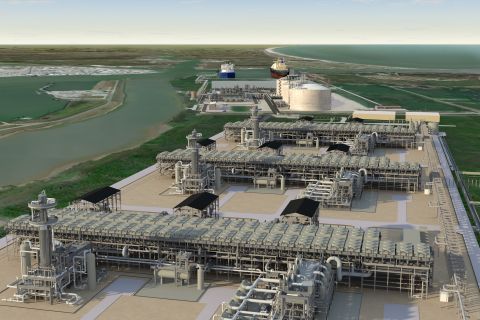Oil dropped over 2% on June 23 and was heading for a weekly decline, as a UK interest rate hike added to concern over economic growth that outweighed lower U.S. crude stocks and other signs of tighter supplies.
It was the second straight day of losses. Crude had dropped about $3 on June 22 after the Bank of England raised interest rates by a bigger-than-expected half a percentage point. Central banks in Norway and Switzerland also hiked rates.
Brent crude slipped $1.85, or 2.5%, to $72.29 a barrel by 1330 GMT, while U.S. West Texas Intermediate (WTI) crude was down $1.86, or 2.7%, at $67.65.
"After yesterday's central banks' action, anxiety has palpably grown," said Tamas Varga of oil broker PVM.
"Due to strengthening economic headwinds caused by recession fears, only conspicuous stock depletion will herald a protracted change in the currently ominous outlook."
Higher interest rates increase borrowing costs for businesses and consumers, which could slow economic growth and cloud the oil demand outlook for the rest of the year.
The prospect of more U.S. interest rate hikes added to those headwinds. U.S. Federal Reserve Chair Jerome Powell said this week two more rate hikes of 25 basis points each by the end of the year was "a pretty good guess."
Gains in the dollar, drawing support from the hawkish comments from global central banks, also weighed. A strong dollar makes oil more expensive for other currency holders and can hit demand and indicate higher risk aversion among investors.
The recession and demand concerns outweighed signs of supply-side tightness. This week's U.S. inventory report showed crude stocks posted a surprise decline of 3.8 million barrels.
Also set to tighten the market is Saudi Arabia's production cut of 1 million barrels per day in July announced along with an OPEC+ deal to limit supplies into 2024.
Recommended Reading
Exxon’s Guyana Gas Project a “Win-Win,” Set for Hook-up by Year-end ‘24
2024-04-26 - Exxon Mobil Corp. CEO Darren Woods said the company’s gas-to-power project in Guyana as a “win-win proposition particularly for the people of Guyana” when completed and hooked-up by year-end 2024.
Segrist: The LNG Pause and a Big, Dumb Question
2024-04-25 - In trying to understand the White House’s decision to pause LNG export permits and wondering if it’s just a red herring, one big, dumb question must be asked.
Texas LNG Export Plant Signs Additional Offtake Deal With EQT
2024-04-23 - Glenfarne Group LLC's proposed Texas LNG export plant in Brownsville has signed an additional tolling agreement with EQT Corp. to provide natural gas liquefaction services of an additional 1.5 mtpa over 20 years.
US Refiners to Face Tighter Heavy Spreads this Summer TPH
2024-04-22 - Tudor, Pickering, Holt and Co. (TPH) expects fairly tight heavy crude discounts in the U.S. this summer and beyond owing to lower imports of Canadian, Mexican and Venezuelan crudes.
What's Affecting Oil Prices This Week? (April 22, 2024)
2024-04-22 - Stratas Advisors predict that despite geopolitical tensions, the oil supply will not be disrupted, even with the U.S. House of Representatives inserting sanctions on Iran’s oil exports.




